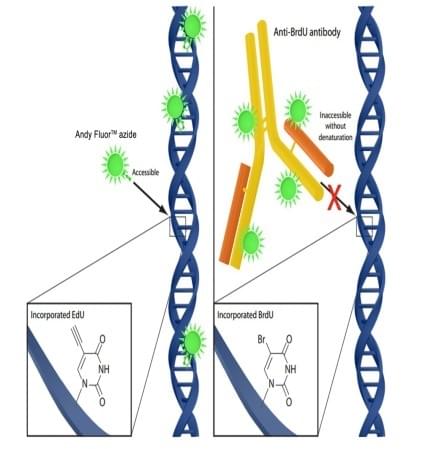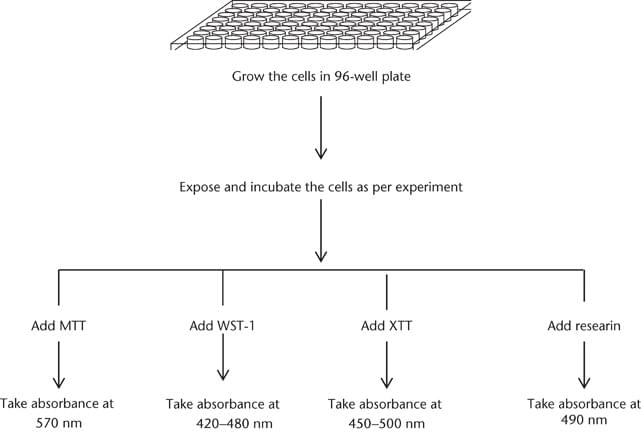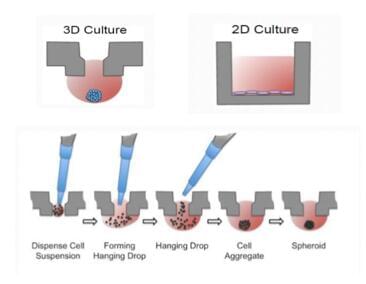- You are here: Home
- Services
- Cell Services
- Cell Line Testing and Assays
- Cell Proliferation Assay Services
Services
-
Cell Services
- Cell Line Authentication
- Cell Surface Marker Validation Service
-
Cell Line Testing and Assays
- Toxicology Assay
- Drug-Resistant Cell Models
- Cell Viability Assays
- Cell Proliferation Assays
- Cell Migration Assays
- Soft Agar Colony Formation Assay Service
- SRB Assay
- Cell Apoptosis Assays
- Cell Cycle Assays
- Cell Angiogenesis Assays
- DNA/RNA Extraction
- Custom Cell & Tissue Lysate Service
- Cellular Phosphorylation Assays
- Stability Testing
- Sterility Testing
- Endotoxin Detection and Removal
- Phagocytosis Assays
- Cell-Based Screening and Profiling Services
- 3D-Based Services
- Custom Cell Services
- Cell-based LNP Evaluation
-
Stem Cell Research
- iPSC Generation
- iPSC Characterization
-
iPSC Differentiation
- Neural Stem Cells Differentiation Service from iPSC
- Astrocyte Differentiation Service from iPSC
- Retinal Pigment Epithelium (RPE) Differentiation Service from iPSC
- Cardiomyocyte Differentiation Service from iPSC
- T Cell, NK Cell Differentiation Service from iPSC
- Hepatocyte Differentiation Service from iPSC
- Beta Cell Differentiation Service from iPSC
- Brain Organoid Differentiation Service from iPSC
- Cardiac Organoid Differentiation Service from iPSC
- Kidney Organoid Differentiation Service from iPSC
- GABAnergic Neuron Differentiation Service from iPSC
- Undifferentiated iPSC Detection
- iPSC Gene Editing
- iPSC Expanding Service
- MSC Services
- Stem Cell Assay Development and Screening
- Cell Immortalization
-
ISH/FISH Services
- In Situ Hybridization (ISH) & RNAscope Service
- Fluorescent In Situ Hybridization
- FISH Probe Design, Synthesis and Testing Service
-
FISH Applications
- Multicolor FISH (M-FISH) Analysis
- Chromosome Analysis of ES and iPS Cells
- RNA FISH in Plant Service
- Mouse Model and PDX Analysis (FISH)
- Cell Transplantation Analysis (FISH)
- In Situ Detection of CAR-T Cells & Oncolytic Viruses
- CAR-T/CAR-NK Target Assessment Service (ISH)
- ImmunoFISH Analysis (FISH+IHC)
- Splice Variant Analysis (FISH)
- Telomere Length Analysis (Q-FISH)
- Telomere Length Analysis (qPCR assay)
- FISH Analysis of Microorganisms
- Neoplasms FISH Analysis
- CARD-FISH for Environmental Microorganisms (FISH)
- FISH Quality Control Services
- QuantiGene Plex Assay
- Circulating Tumor Cell (CTC) FISH
- mtRNA Analysis (FISH)
- In Situ Detection of Chemokines/Cytokines
- In Situ Detection of Virus
- Transgene Mapping (FISH)
- Transgene Mapping (Locus Amplification & Sequencing)
- Stable Cell Line Genetic Stability Testing
- Genetic Stability Testing (Locus Amplification & Sequencing + ddPCR)
- Clonality Analysis Service (FISH)
- Karyotyping (G-banded) Service
- Animal Chromosome Analysis (G-banded) Service
- I-FISH Service
- AAV Biodistribution Analysis (RNA ISH)
- Molecular Karyotyping (aCGH)
- Droplet Digital PCR (ddPCR) Service
- Digital ISH Image Quantification and Statistical Analysis
- SCE (Sister Chromatid Exchange) Analysis
- Biosample Services
- Histology Services
- Exosome Research Services
- In Vitro DMPK Services
-
In Vivo DMPK Services
- Pharmacokinetic and Toxicokinetic
- PK/PD Biomarker Analysis
- Bioavailability and Bioequivalence
- Bioanalytical Package
- Metabolite Profiling and Identification
- In Vivo Toxicity Study
- Mass Balance, Excretion and Expired Air Collection
- Administration Routes and Biofluid Sampling
- Quantitative Tissue Distribution
- Target Tissue Exposure
- In Vivo Blood-Brain-Barrier Assay
- Drug Toxicity Services
Cell Proliferation Assay Services

Cells are structural and functional unit of our body which control and maintain the function of all unicellular and multicellular organisms. The process of cell proliferation and differentiation plays a key role from the time of embryogenesis to development of whole organism from single- or double- cell embryo and continues its critical role in maintenance of adult tissue homoeostasis by recycling the old cells with new cells. Besides, abnormal cell proliferation is also associated with human diseases like cancer. In sum, cell proliferation assays are very important in scrutinizing the rate of cell proliferation in both in vitro and in vivo conditions.
With our over 10 years' experiences of working with tumor cell lines, Creative Bioarray provides cell proliferation assay service for our customers. We provide optional assay methods based on the cell type and protocol, and on the customer’s preference of proliferation measurement.
We are capable of performing different cell proliferation assays based on several concepts, which are measuring rate of DNA replication, analysis of metabolic activity, cell surface antigen recognitions, detecting proliferation markers, ATP Measurement, measures of membrane integrity and so on.
Creative Bioarray cell proliferation assay advantages

- Flexible: We chose suitable assay method based on the customer’s cell type and requirements.
- Accurate: The data obtained strongly correlates to the cell number.
- Sensitive: Capable of detecting low cell numbers.
- Fast: High-throughput, fast turnaround time.
- Deliverables: Dose response curves and IC50 values.
Different cell proliferation assay technique available here
- DNA synthesis cell proliferation assays
- Principle: Proliferating cells incorporate 3H-thymidine/BrdU labels into their nascent DNA, which can be washed, adhered to filters and then measured.
- Dye Label: 3H-thymidine, BrdU
- Feature: Traditional method, reliable
- Application: This is suitable for immunohistochemistry, immunocytochemistry, in-cell ELISAs, flow cytometry analysis and high-throughput screening.

- Metabolic cell proliferation assays
- Principle: Measure of cell proliferation based on the metabolic activity of a population of cells can be used. Tetrazolium salts or Alamar Blue are compounds which become reduced in the environment of metabolically active cells, forming a formazan dye that subsequently changes the color of the media, which is caused by increased activity of the enzyme lactate dehydrogenase during proliferation. The absorption of the media-containing dye solution can be read using a spectrophotometer or microplate reader in low- or high-throughput configurations.
- Dye Label: MTT, XTT, MTS, WST1, WST8
- Feature: Mature method for cell proliferation assays, High-throughput
Related Cell Proliferation Kits are available in Creative Bioarray.
- Detecting proliferation markers
- Principle: Another way to measure cell proliferation is to detect an antigen present in proliferating cells, but not nonproliferating cells, using a monoclonal antibody against the antigen.
- Antigens: Ki-67, PCNA (proliferating cell nuclear antigen), topoisomerase IIB and phosphohistone H3.
- Feature: High-throughput, suitable for assaying tumor cell proliferation in vivo.
- Measuring [ATP]
- Principle: When cells begin to undergo apoptosis or lose membrane integrity, ATP stocks become depleted through the activity of ATPases that concurrently prevent any new ATP synthesis. In the presence of ATP, luciferase produces light (proportional to the ATP concentration) that can be detected by a luminometer or any microplate reader capable of reading luminescent signals.
- Enzyme: luciferase
- Feature: high-throughput cell proliferation assays and screening.
- Tracking new RNA synthesis
- Principle: Detection of newly synthesized RNA is an important method to measure cell proliferation and toxicological profiling. 5-ethynyl uridine (EU) can be used to detect newly synthesized RNA .
- Substrate: 5-ethynyl uridine (EU)
- Feature: Simple procedure.
- Fluorescence-based cell proliferation assays
- Principle: Fluorescent intracellular labeling can be used for proliferation assays of live cells. Labeled cells can be assayed using flow cytometry and fluorescent microscopy. The dye is long lasting and well retained within labeled cells.
- Fluorescent Dye: CFSE
- Feature: High-throughput, sufficient for ~1000 assays.
- Measures of membrane integrity
- Principle: All assays based on Measures of membrane integrity rely on the breakdown of the cell membrane to either allow macromolecules to enter the cell, or allow intracellular proteins to be secreted into the culture media.
- Substrate: LDH, Trypan Blue, Calcein-AM, Propidium Iodide/7-AAD

3D cell proliferation assays
Besides, Creative Bioarray also provides 3D cell proliferation assays by using Soft agar assay with optimized growth and assay conditions based on our experiences with 3D cell culturing. We can upgrade the standard package to include 2D vs 3D comparison.
Quotations and ordering
Our customer service representatives are available 24hr a day!
We thank you for choosing Creative Bioarray service.
Explore Other Options
For research use only. Not for any other purpose.

